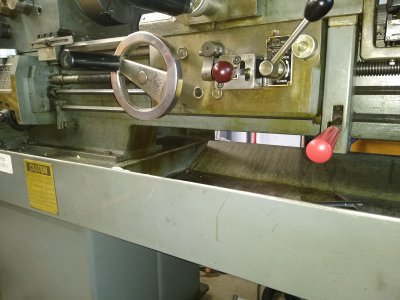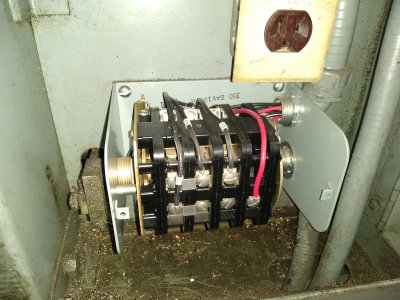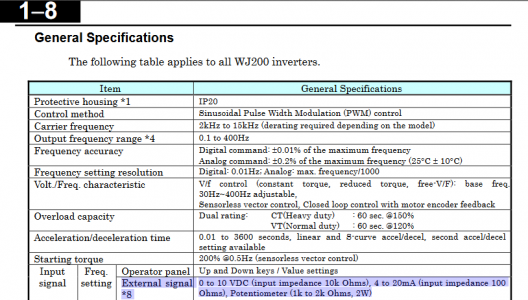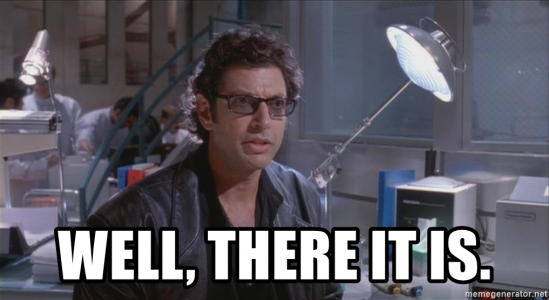- Joined
- Nov 7, 2014
- Messages
- 32
@macardoso thanks for making my life easier! Yes planning on using the gears on the lathe and just tuning the speed with a pot.
Read parts of the WJ200 manual when it was slow at work. Going with the Hitachi since I can buy it from drives warehouse.
So far this is what I have:
Main panel -> Enclosure -> Power Disconnect Switch-> Breaker -> EMI filter -> Hitachi WJ200-022SF VFD -> Motor
VFD inputs/outputs:
Brake resistor
Controller
Forward/Reverse drum switch from from Apron Lever
For the front panel controls. Front panel would be run, stop, amp meter, 1k 2W pot for frequency adjustment. I dont know if I would use a jog joystick/button. Will be using a air mister so no coolant pump/control needed.
15A 2 pole breaker -> 220V to 24VDC transformer -> Ice cube relays for Run, forward, reverse (not sure if this is needed on forward/reverse if I dont use a Jog button on the control).
Might go with a wall mount enclosure so that I can house the VFD and ELS together. I can modify the back of the lathe to fit a 12x15x8 enclosure which might be too small to fit the VFD and ELS.
Read parts of the WJ200 manual when it was slow at work. Going with the Hitachi since I can buy it from drives warehouse.
So far this is what I have:
Main panel -> Enclosure -> Power Disconnect Switch-> Breaker -> EMI filter -> Hitachi WJ200-022SF VFD -> Motor
VFD inputs/outputs:
Brake resistor
Controller
Forward/Reverse drum switch from from Apron Lever
For the front panel controls. Front panel would be run, stop, amp meter, 1k 2W pot for frequency adjustment. I dont know if I would use a jog joystick/button. Will be using a air mister so no coolant pump/control needed.
15A 2 pole breaker -> 220V to 24VDC transformer -> Ice cube relays for Run, forward, reverse (not sure if this is needed on forward/reverse if I dont use a Jog button on the control).
Might go with a wall mount enclosure so that I can house the VFD and ELS together. I can modify the back of the lathe to fit a 12x15x8 enclosure which might be too small to fit the VFD and ELS.
Last edited:





